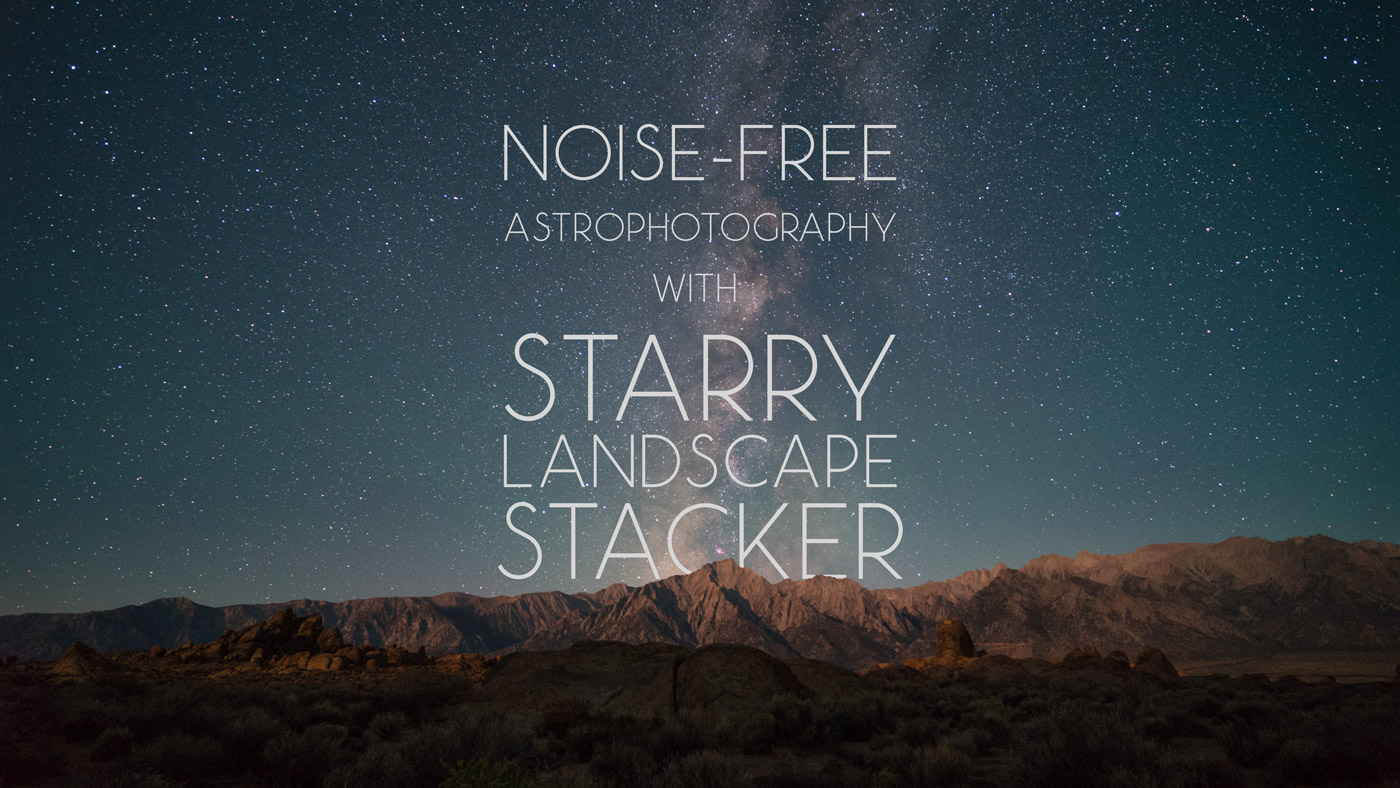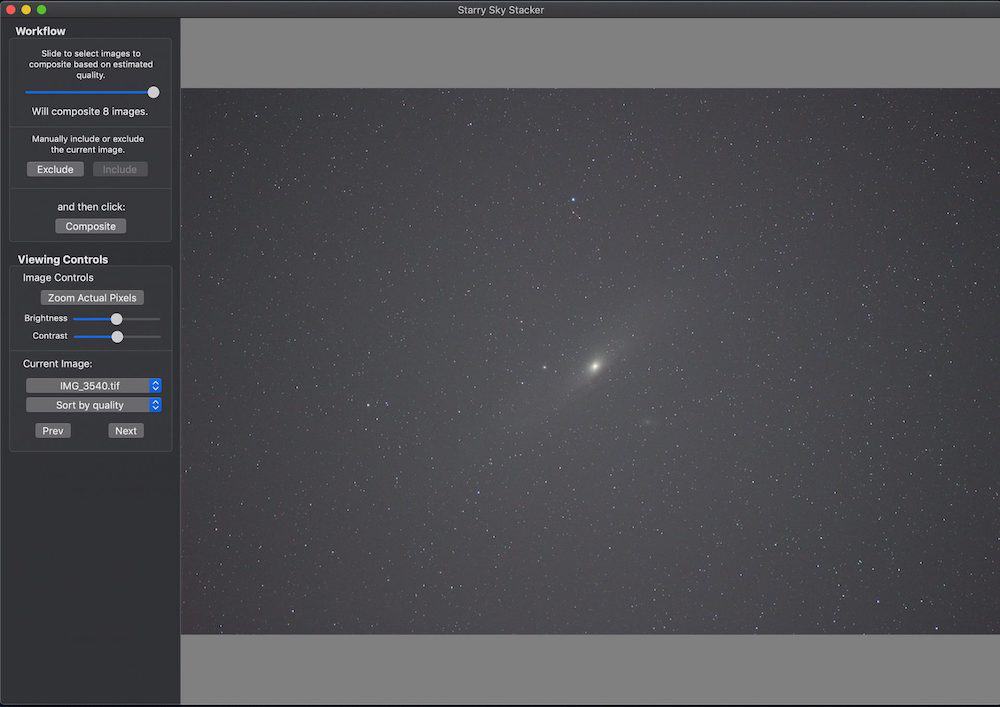
- BEST STACKING SOFTWARE FOR ASTROPHOTOGRAPHY HOW TO
- BEST STACKING SOFTWARE FOR ASTROPHOTOGRAPHY PRO
- BEST STACKING SOFTWARE FOR ASTROPHOTOGRAPHY FREE
Lots of DSO’s emit light on these wavelengths which you are not able to capture with a DSLR. DSLR’s have an IR-cut filter which blocks the infrared part of the light spectrum. Use a T2 ring to connect your DSLR camera to your telescopeĪfter a while, you will notice that there are some disadvantages when using a DSLR for astrophotography. Canon, Nikon, Sony) which costs around $15. All you need is a T2 adapter ring for your camera type (e.g. It is also easy to connect your DSLR camera to a telescope. The combination of a DSLR with a widefield APO refractor is ideal for larger DSO’s such as the horsehead nebula, the orion nebula and the famous andromeda galaxy.

The large sensor will produce a nice, widefield view, especially in combination with that widefield APO refractor I’ve mentioned earlier.
BEST STACKING SOFTWARE FOR ASTROPHOTOGRAPHY HOW TO
The main advantages are that (a) you can also use your DSLR for your daytime photography as well, (b) you are probably already familiar on how to use your DSLR and (c) a DSLR has a relatively large sensor in comparison to some of the dedicated astrophotography cameras that are on the market. One easy way to start your astrophotography hobby is with a regular DSLR camera if you already own one. If you are in this process, I highly recommend you read this blog in which I explain what camera would be best suited for you, depending on your particular interests, skills and financial means. Step 3: Choosing the ‘right’ camera for astrophotographyĬhoosing the ‘right’ kind of camera for your astrophotography hobby can be hard with the many options you have today. Nice horsehead nebula picture, combination of high quality 80MM APO refractor and lots of practice.Shitty horsehead nebula, combination of a cheap achromat refractor (see halos around stars) and lack of skills.

If you want more information I invite you to read my blog about best beginner telescopes.

Some of the cheaper telescopes suffer from ‘chromatic aberration’ leading to a false color images of your DSO and purple halos around your stars – you don’t want that :-)! Other advantages of widefield APO refractors are that they are relatively lightweight, they are easy to use, and they don’t require any maintenance. This means the telescope will produce the correct colors of a DSO in your picture.
BEST STACKING SOFTWARE FOR ASTROPHOTOGRAPHY FREE
An APO refractor usually has three separate lens elements (triplet) which together produce a chromatic aberration FREE image. Widefield APO refractors can produce a high quality, widefield view of some of the famous astrophotography targets such as the orion nebula, the horsehead nebula, and the andromeda galaxy. More specifically, I would recommend an apochromatic (APO) refractor for several reasons. I advice you to start your hobby with a so called ‘widefield’ refractor telescope. Of course, you would also need a ‘good’ astrophotography telescope. Step 2: Get a ‘decent’ beginner telescope for astrophotography Is you’re in the process of finding an EQ mount, I’ll recommend you to read my other blog on beginner level astrophotography mounts. It is too much to explain all this in this blog. When looking for an EQ mount, I’ll also advice you to check out the maximum payload capacity of an EQ mount, if the mount supports autoguiding, and if the mount can be connected to a laptop or PC.

BEST STACKING SOFTWARE FOR ASTROPHOTOGRAPHY PRO
My lightweight setup: 80mm APO Refractor, ZWO ASI 1600MM pro and filter wheel, Orion 50mm guide scope and ZWO ASI 120MC guidecam You need automated, highly accurate tracking to take long exposure images of DSO’s. These mounts can automatically track objects within our own solar system (moon, planets) and DSO’s in deep space. Please read this blog for more information on the differences between alt-az and EQ mounts.Īdditionally, I would advice you to look for a computerized mount – also called a ‘goto’ mount. You need an EQ mount that can be polar aligned for astrophotography. The main reason for this is that an EQ mount can be aligned with the north or south celestial pole whereas an alt-az mount cannot. Whereas Alt-Az mounts are easy to setup and use, they cannot accurately track so called ‘Deep Space Objects (DSO’s). Be aware that there are two types of mounts: Equatorial (EQ) mounts and Altitude Azimuth (Alt-Az) mounts. A mount is basically a device that carries your telescope, camera and other astrogear you may have. The most important piece of equipment that you will need is a decent ‘beginner level’ astrophotography mount. Step 1: Get the ‘right’ telescope mount for astrophotography


 0 kommentar(er)
0 kommentar(er)
